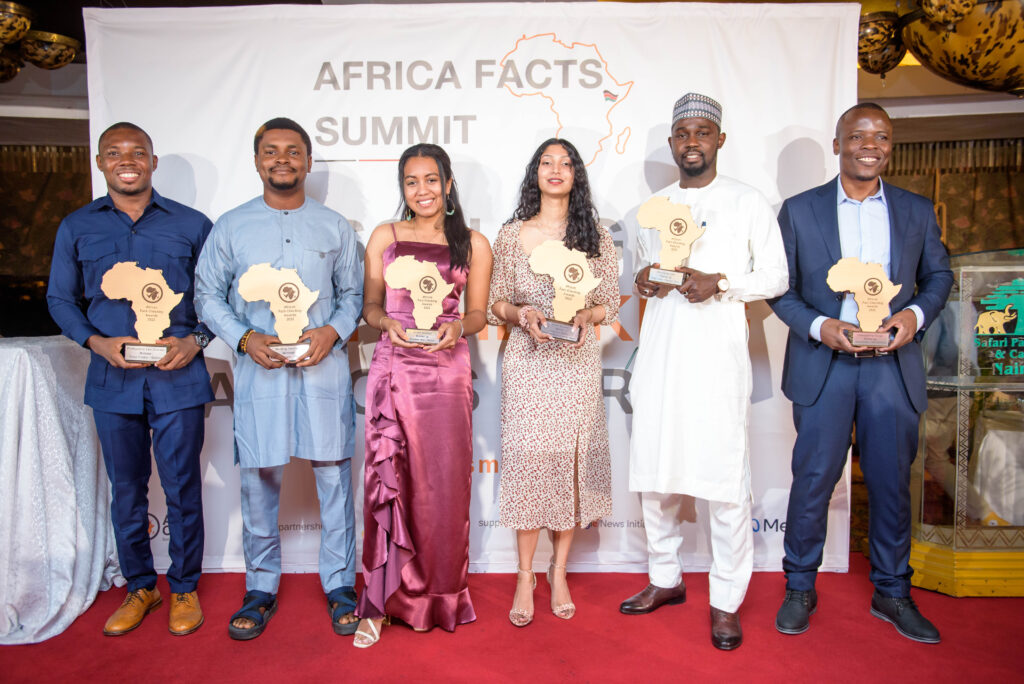Kunle Adebajo, the Investigations Editor at HumAngle and Editor-in-Chief, of Punocracy, was awarded the winner of Fact Check of the Year by a Working Journalist at the Ninth Annual African Fact Check Awards in Kenya at the end of 2022.
He spoke to fraycollege about the practice of fact-checking.
Tell us a bit about your journalism career. What made you decide to be a reporter?
I have always had a crush on words and their ability to be moulded into wondrous shapes. Though I didn’t read a lot of books, as a child I would volunteer for every writing, speaking, and literary competition I came across. I had a book of poetry, which I doubt I can still find. And I always imagined I would end up either as a lawyer or a journalist. While I studied law for five years, I couldn’t pass the opportunity also to join the Campus Journalist Association. And when I graduated, writing and reporting seemed the most natural career path for me. I enjoy discovering new facts through research, educating others, contributing to important topics, and helping to shape public opinion.
How long have you been reporting?
I started professional reporting in March 2018. So it’s nearly five years now. But I was actively involved in journalism as a student at the University of Ibadan for at least the five years leading up to that as well.
Your award-winning fact check focused on a collage of images shared on Twitter that claimed to prove the existence of US-sponsored bio-laboratories in Nigeria and connected to a monkeypox outbreak. What made you decide to fact-check the tweets?
On May 27, a colleague, Murtala Abdullahi who is Head of Armed Violence and Climate Insecurity at HumAngle, shared the link to a tweet with me. An anonymous account that constantly shared pro-Russian state propaganda said the Ministry of Defence had come about evidence of four “bio-laboratories in Nigeria… related to monkey smallpox spreading”. The account has since been deleted. The claim seemed fishy, so I got to work, and the fact-check was published a few days later.
How did you go about verifying that these photographs were, in fact, shared by the Russian government and were not secret facilities?
It was easy to see that the claims originated from the Russian government. The Telegram channel, Минобороны России (Ministry of Defence of Russia), where our anonymous Twitter friend got the pictures is acknowledged by the Defence Ministry’s verified Twitter account. The head of the ministry’s radiation, chemical, and biological defence troops, Igor Kirillov, was quoted by news outlets as having made these connections too and calling on the World Health Organization (WHO) to investigate the United States’ role in the virus’s spread. Fact-checking the images wasn’t easy. I had to extract the Russian text using Google Lens and then translate them into English. Reverse image searches did not always work because the previous uploads on the internet did not leave a large digital footprint. Some were in academic papers and not necessarily blogs or regular web pages. One particular picture of the Clinical Research Centre in Abuja could only be accessed through Google Street view, which took a while to figure out. Once I traced the facilities, it was relatively easy to discover what they were set up to do and who their apparent funders are.
What advice would you give to journalists using social media to write stories?
Social media is a great resource. There is always a lot going on that is newsworthy. But there is also a lot of crap and misleading information that is being shared. It is our job to separate the good stuff from the bad stuff and ensure that purveyors of disinformation have a lot more difficult time doing what they do. So if you’ll be relying on social media to tell stories, you need to be patient, sceptical, and be familiar with the latest trends in tech.

Kunle Adebajo (second from the left) was awarded the winner of Fact Check of the Year by a Working Journalist at the Ninth Annual African Fact Check Awards in Kenya at the end of 2022.
